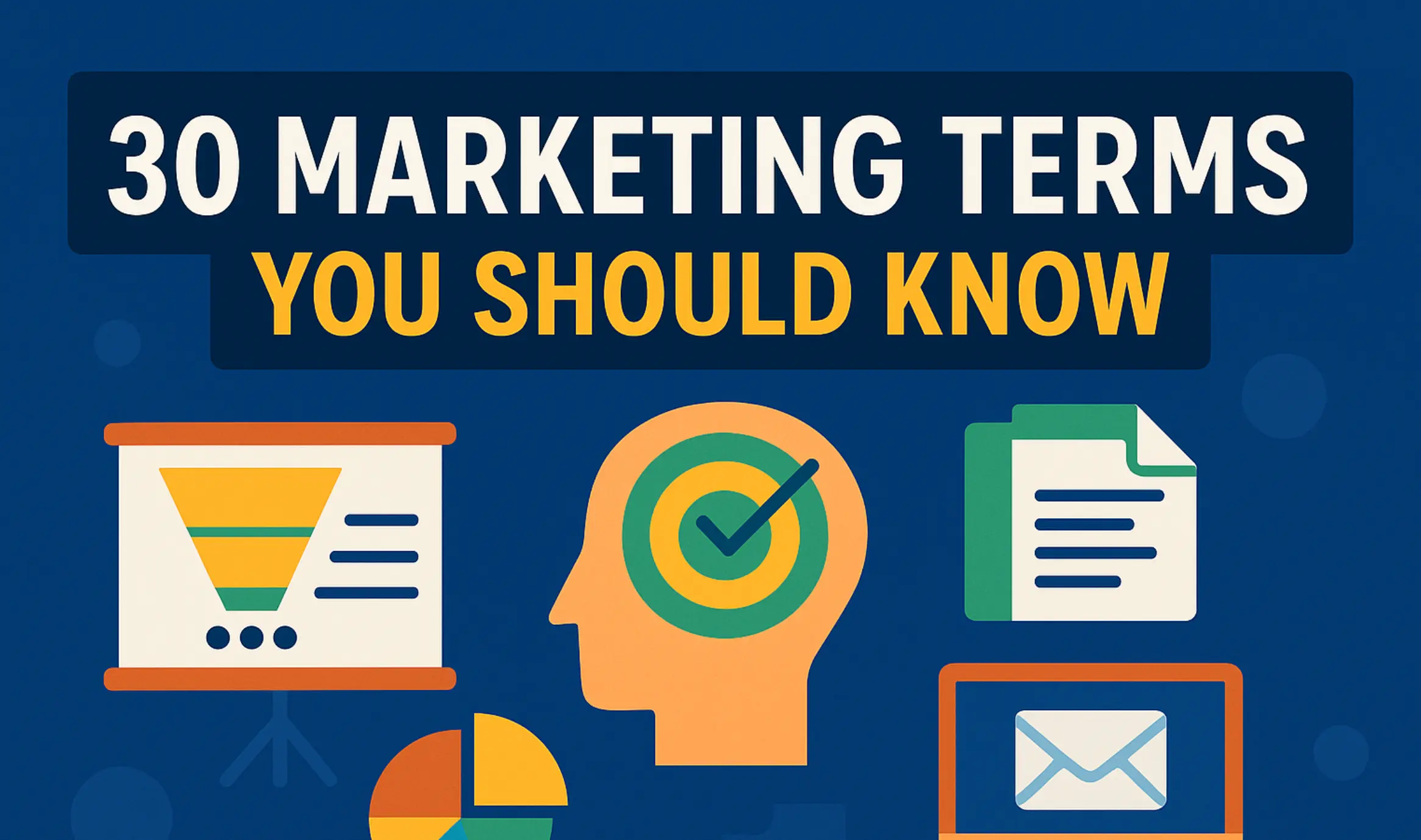Michael Jordan Marketing Strategy (2025 Update): Jordan Brand, Nike & Global Influence
Updated on
Published on

- Jordan Brand’s Business Boom: Michael Jordan’s namesake Jordan Brand became Nike’s top-performing division by 2024, with sales soaring to $7 billion annually. Analysts now value the Jordan Brand at well over $10 billion as a standalone business, highlighting its outsized influence in the sports apparel market.
- Record-Breaking Athlete Wealth: Bolstered by lifetime Nike royalties and savvy investments, Michael Jordan’s net worth climbed to approximately $3.5 billion by 2025. A major factor was his 2023 sale of a majority stake in the Charlotte Hornets for an estimated $1.76 billion profit, further cementing his legacy as the richest athlete ever.
- Global Marketing Reach: Jordan’s marketing strategy transcended basketball. His Jumpman logo now appears on international sports stages – for example, France’s Paris Saint-Germain soccer club sports the Jumpman on its kits through a groundbreaking partnership since 2018. This reflects how the Jordan Brand business has expanded worldwide, from basketball courts to football pitches, resonating with diverse audiences.
- Pioneer of Celebrity Athlete Branding: Jordan pioneered modern celebrity athlete branding. From Gatorade’s iconic “Be Like Mike” ads to Nike’s Air Jordan releases, he showed that an athlete could be a global brand. His playbook of authentic storytelling and personal branding set the template for today’s stars like LeBron James and Cristiano Ronaldo to build their own empires.
- Cultural Icon & Influencer Marketing Blueprint: Decades after his final NBA game, Jordan remains a cultural force. The 2020 docuseries The Last Dance reintroduced him to a new generation, and the 2023 film Air dramatized Nike’s pursuit of him – underscoring his mythos. Sneaker drops still sell out in minutes, and each retro release or collaboration (from Travis Scott to Dior) drives hype in a way that exemplifies modern sports influencer marketing. In short, Michael Jordan’s marketing influence is as relevant in 2025 as ever.
Few figures in sports have achieved the global mystique of Michael Jordan. Revered by fans across continents, Jordan’s mastery on the basketball court and his pioneering role in sports marketing reshaped the NBA’s appeal, sneaker culture, and even how athletes engage with fans off the court. This article explores how Jordan revolutionized both basketball and the sportswear marketing industry, leaving an enduring influence on future stars, brand partnerships, and consumer expectations.
Athletic Dominance and Pivotal Moments
Michael Jordan’s six NBA championships, five MVP awards, and a string of iconic highlights (including “The Shot” and “The Flu Game”) cemented him as a singular talent. His flair for clutch performances made the Chicago Bulls must-watch entertainment, boosting television ratings and turning casual viewers into devoted followers.
His flair for clutch performances made the Chicago Bulls must-watch entertainment, boosting television ratings and turning casual viewers into devoted followers. In sports history, moments like these are often remembered not just through highlight reels, but through the physical symbols of excellence—trophies, jerseys, and custom medals for awards that capture the emotion and meaning behind each achievement. These medals don’t just commemorate victories; they tell the story of perseverance, legacy, and inspiration—just as Jordan’s career continues to do for generations of fans and athletes alike.
Jordan’s relentless competitiveness and showmanship also encouraged his rivals to elevate their games. His style of play—combining mid-air acrobatics, fadeaway jumpers, and defensive tenacity—became the standard by which future superstars would be judged. Each dazzling dunk or buzzer-beater captured imaginations worldwide, fueling the notion that basketball could be as captivating and global as soccer or any other major sport.
International Appeal and the 1992 Dream Team
Jordan’s impact went beyond American borders, particularly in 1992 when he led the U.S. “Dream Team” at the Barcelona Olympics. For many international viewers, that squad offered a first glimpse of NBA-caliber play, with Jordan at the forefront of the spectacle. Fans from Europe, Asia, and beyond quickly identified Jordan’s name with the pinnacle of basketball excellence. This exposure significantly accelerated the NBA’s global expansion, setting the stage for worldwide fan bases and paving the way for international stars to enter the league.

A Revolutionary Partnership
In 1984, Nike signed Michael Jordan to a then-unprecedented rookie endorsement deal worth $2.5 million. The collaboration launched the Air Jordan 1 in 1985, featuring a striking red-and-black color scheme that clashed with NBA uniform rules and was initially “banned.” This controversy only heightened the line’s allure, sparking interest in both the shoes and Jordan’s charismatic persona. Over subsequent releases, each Air Jordan model introduced inventive design elements, ensuring each sneaker felt like a milestone in Jordan’s career.
.webp)
Cultural Phenomenon and Economic Might
The Air Jordan brand grew into a fashion and cultural statement, blending basketball performance with street style. Limited-edition releases and retro reissues maintain feverish consumer demand, sometimes selling out in minutes. By 2024, the Air Jordan line exceeded $5 billion in annual revenue—an astonishing figure that underscores its ongoing relevance decades after Jordan retired from professional basketball.
Beyond footwear, these partnerships shaped a new approach to athlete endorsements. Jordan wasn’t just a pitchman—he was at the creative core of the brand, influencing product aesthetics and storytelling. His synergy with Nike demonstrated that marketing a sneaker could transcend sport, appealing to fans of hip-hop, urban fashion, and mainstream pop culture.

Jordan’s Blueprint for Modern Athletes
Athlete as a Brand
Prior to Jordan, endorsements were generally transactional. Jordan proved an athlete could embody an entire brand identity, setting a precedent for names like LeBron James, Roger Federer, and Cristiano Ronaldo to negotiate deeper involvement in product design and marketing strategy. Rather than just modeling shoes in print ads, Jordan co-created an emotional narrative that connected each sneaker release to a significant moment, forging loyalty far beyond typical fan devotion.
Emotional Storytelling and Authenticity
From Gatorade’s “Be Like Mike” campaign to McDonald’s commercials, Jordan’s marketing leaned on emotional resonance and youthful aspiration. Fans saw him as the driven underdog who rose to dominance through relentless work ethic. Advertisers recognized the authenticity behind Jordan’s competitiveness, tapping into that emotional authenticity to inspire viewers. This approach turned every product endorsement into a mini storyline, bridging sports and personal motivation.
Widening Paths for Future Stars
Jordan’s success paved the way for athletes to become brand ambassadors, partial owners, or co-creators of signature lines. High-profile partnerships like Kevin Durant’s KD brand with Nike or Serena Williams’s design input with her sponsors owe a debt to Jordan’s trailblazing. Modern superstars often emulate Jordan’s trajectory, blending on-field performance with off-field entrepreneurial ventures.
Sneaker Culture and Street Fashion: A Lasting Legacy
Air Jordan in Streetwear
When the Air Jordan 1 arrived, it crossed an invisible boundary—shoes once reserved for basketball courts suddenly became coveted lifestyle accessories. B-boys, skateboarders, and rap icons alike integrated Jordans into their wardrobes, turning them into cultural symbols of status and flair. This shift established a new trend: performance sneakers could be as much about self-expression as athletics.
Limited Releases and the Resale Market
The brand leveraged scarcity to fuel excitement—limiting production runs or distributing special editions that collectors scrambled to acquire. This approach to hype marketing remains standard practice among modern sneaker releases and streetwear collaborations, such as Supreme or Off-White. Rare Jordan models command steep resale prices, illustrating how Jordan’s brand turned functional footwear into cultural artifacts.
Expanding into a Global Business
Over time, Jordan Brand partnerships extended beyond basketball, aligning with designers or celebrities for innovative lines. These collaborations continuously refresh the brand’s identity, engaging audiences that might never have watched an NBA game. Whether a sneaker drop features futuristic materials or references nostalgic colorways from Jordan’s Bulls era, each product taps into a sense of heritage and exclusivity.

Social Activism and Evolving Criticism
Philanthropy and Social Involvement
Critics once argued Jordan avoided political stances or activism during his prime. Later in life, he demonstrated a more overt philanthropic and social conscience, donating millions to initiatives focusing on youth education, racial equality, and community development. This shift parallels a broader expectation for high-profile athletes to leverage their platforms for social causes, reflecting how influential Jordan’s brand identity has become.
Ethical Manufacturing Concerns
Nevertheless, the success of Jordan’s brand, manufactured largely overseas, is not free from scrutiny. Nike’s supply chain controversies over labor standards occasionally surface in media discussions about exploitation in factories. This tension highlights the complexities big sportswear brands face—balancing brand equity, consumer demand, and corporate responsibility.
Marketing Lessons from Michael Jordan’s Empire
Michael Jordan’s transformation of both basketball and sportswear marketing offers essential insights for modern brands, entrepreneurs, and athletes:
- The Power of Unique Partnerships
- By co-developing products instead of merely endorsing, Jordan built enduring synergy. Modern athletes and brand owners can replicate this co-creation model for deeper consumer engagement.
- Emotional Narratives Create Loyalty
- From “Be Like Mike” to the story behind each Air Jordan release, emotional storytelling fosters a personal connection. Audiences relate to both success and struggle, turning consumer relationships into something more than just sales.
- Performance Meets Style
- A brand can straddle athletic utility and street-fashion credibility. The momentum from Jordan’s on-court achievements lent authenticity to Air Jordans, propelling the shoes into everyday wardrobes.
- Scarcity and Exclusivity
- Limited-edition sneakers or exclusive brand collaborations keep hype cycles rolling, demonstrating how well-managed scarcity can boost consumer intrigue and demand.
- Evolution While Preserving Heritage
- Although Jordan last played an NBA game in 2003, fresh sneaker releases, colorways, and brand collaborations keep interest alive for new generations. Balancing innovation with historical references fosters both nostalgia and modern appeal.
How Did Michael Jordan Impact the World?
Michael Jordan’s influence transcends basketball, reshaping sports, culture, and global marketing in profound ways:
- Revolutionizing Basketball and Globalizing the NBA:
Jordan’s dominance on the court, including six NBA championships and iconic performances like “The Flu Game,” elevated the NBA to a global stage. His leadership in the 1992 Olympics with the U.S. “Dream Team” introduced millions of international fans to professional basketball, paving the way for the NBA’s expansion into global markets. - Transforming Athlete Endorsements:
Michael Jordan redefined athlete endorsements by collaborating deeply with brands like Nike to co-create the iconic Air Jordan line. This partnership turned sneakers into a global fashion statement and set the blueprint for modern athlete branding, influencing stars like LeBron James, Serena Williams, and Cristiano Ronaldo. - Building Sneaker Culture and Streetwear:
Jordan’s Air Jordans broke boundaries, becoming both a basketball performance shoe and a cultural icon. His shoes shaped sneaker culture, blending sportswear with street style, and inspired an entire resale and collector’s market worth billions. - Inspiring Generations Through Emotional Storytelling:
Campaigns like Gatorade’s “Be Like Mike” and Nike’s emotional ads made Jordan an inspirational figure, symbolizing hard work, resilience, and excellence. His story of overcoming obstacles resonated globally, motivating countless individuals to pursue their dreams. - Driving Social and Economic Change:
Jordan’s brand partnerships, philanthropic efforts, and business ventures have contributed billions to the global economy while supporting youth education, racial equality, and community development. His legacy continues to influence how athletes use their platform to effect social change.
The Enduring Importance of Jordan’s Influence
Michael Jordan’s remarkable narrative—rising from an overlooked college athlete to a six-time NBA champion and multi-billion-dollar brand architect—represents the pinnacle of synergy between athletic success and savvy marketing. By presenting himself as both a fierce competitor and a relatable icon, Jordan bridged cultural gaps, extending basketball’s influence to areas of fashion, music, and broader entertainment. Furthermore, through strategic co-branding with Nike, Jordan established a template for athlete-driven product lines that many big names mirror today.
From a marketing perspective, Jordan’s imprint looms over every subsequent sneaker hype, brand partnership, or athlete’s ambition to become a business powerhouse. Meanwhile, from a sports perspective, his blend of skill, competitiveness, and showmanship ushered in a new standard for professional basketball—and championed a global following that turned the NBA into a cultural export. This hybrid role, both on-court magician and off-court marketing genius, underscores the comprehensive impact Jordan had on shaping fans’ expectations of celebrity athletes.
In essence, Michael Jordan demonstrated the profound power of cohesive storytelling, authenticity, and consistent performance. His brand rests on more than highlight reels; it’s built on the ethos of excellence—a pursuit that resonates with fans of basketball and style enthusiasts alike. Today’s sports economy teems with athlete collaborations and signature lines, all traces of a legacy begun by a once-overlooked player who simply refused to accept defeat, whether in the final seconds of a championship game or in the competitive world of sports marketing.
Check Out Marketing Strategies of Other Companies
- Red Bull
- Fenty Beauty
- Louis Vuitton
- Alo
- Zara
- Victoria Secret
- Aritizia
- Tesla
- BMW
- Mercedes-Benz
- Porsche
- Fenty Beauty
- Sony
- Duolingo
- Adidas
- Nike
- Mcdonald's
FAQ: Michael Jordan’s Marketing Strategy & Jordan Brand (2025)
1) Why is Michael Jordan considered a marketing icon?
Because he turned elite performance into a global brand story—pairing on-court greatness with authentic, long-running partnerships that built the Jordan Brand into a cultural and business powerhouse.
2) What is Michael Jordan’s core marketing strategy?
Elevate a signature product line around a compelling personal narrative (competitiveness, excellence), then sustain demand with storytelling, design innovation, and selective scarcity.
3) How is Jordan Brand different from Nike?
Jordan Brand operates as a distinct Nike division with its own logo (Jumpman), athlete roster, creative direction, and product calendar—while leveraging Nike’s scale in design, supply chain, and distribution.
4) How much revenue does Jordan Brand generate?
As noted in the article, Jordan Brand reached record annual sales in the mid-single-digit billions and continues to grow, making it one of Nike’s top-performing businesses.
5) Why did the “Banned” Air Jordan 1 matter?
It framed Jordan as a rule-breaking innovator and turned a compliance issue into myth-making—proof that controversy, when authentic, can fuel brand heat.
6) What made “Be Like Mike” so effective?
It delivered simple, emotional storytelling that invited fans to identify with Jordan’s drive—creating loyalty that outlived the campaign itself.
7) Did The Last Dance and the film Air change demand?
Yes—both reintroduced Jordan’s story to new audiences, spiking interest in retros, collaborations, and the broader Jordan narrative.
8) How does Jordan Brand keep products desirable over time?
Through tight drop calendars, limited runs, retro cycles, and high-profile collaborations that balance nostalgia with fresh design.
9) How global is Jordan Brand today?
Very—its footprint spans basketball, soccer (e.g., PSG kits under the Jumpman), American football, baseball, women’s hoops, and college/NIL partnerships.
10) Which athletes represent Jordan Brand now?
A mix of NBA/WNBA stars and rising talents (plus select athletes in other sports) who extend the Jumpman’s relevance beyond Michael’s playing career.
11) What are the key lessons for marketers from Jordan’s playbook?
Co-create products (not just ads), tell a consistent human story, harness scarcity thoughtfully, and expand into adjacent cultures (music, fashion, global sport).
12) How does resale culture impact Jordan Brand?
It amplifies hype and awareness; while not controlled by the brand, secondary-market energy reinforces perceived value and cultural status.
13) How does Jordan Brand handle criticism around manufacturing ethics?
Nike and Jordan Brand communicate improvements in standards and transparency; the brand’s long-term equity also depends on continual progress here.
14) What role do collaborations play (e.g., Dior, Travis Scott)?
They introduce the Jumpman to new style tribes, elevate perceived luxury, and create storylines that drive earned media and organic demand.
15) What is Michael Jordan’s business impact beyond basketball?
He set the modern template for athlete-led brands, lifetime partnerships, equity stakes, and cross-category influence that many stars follow today.







